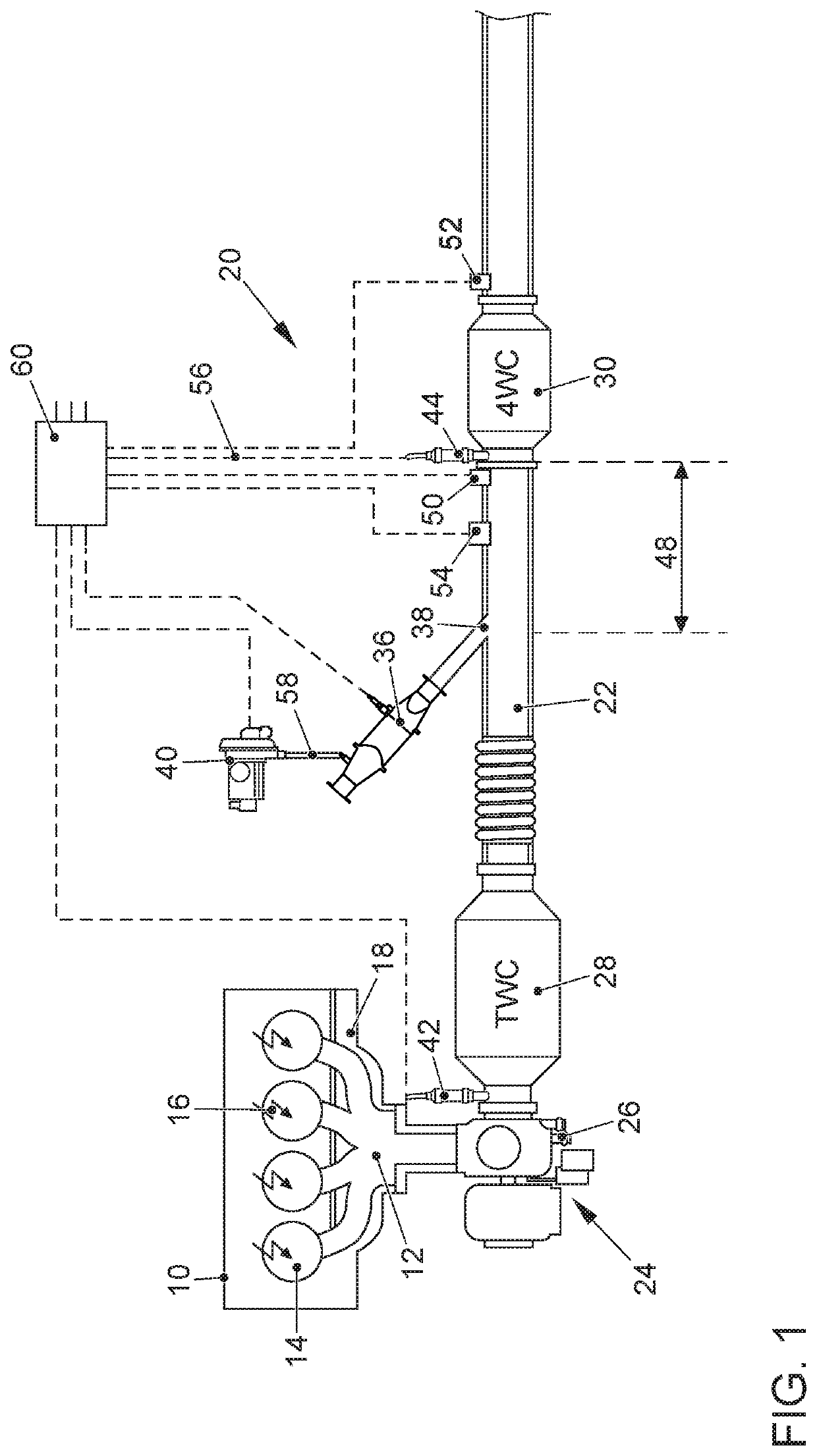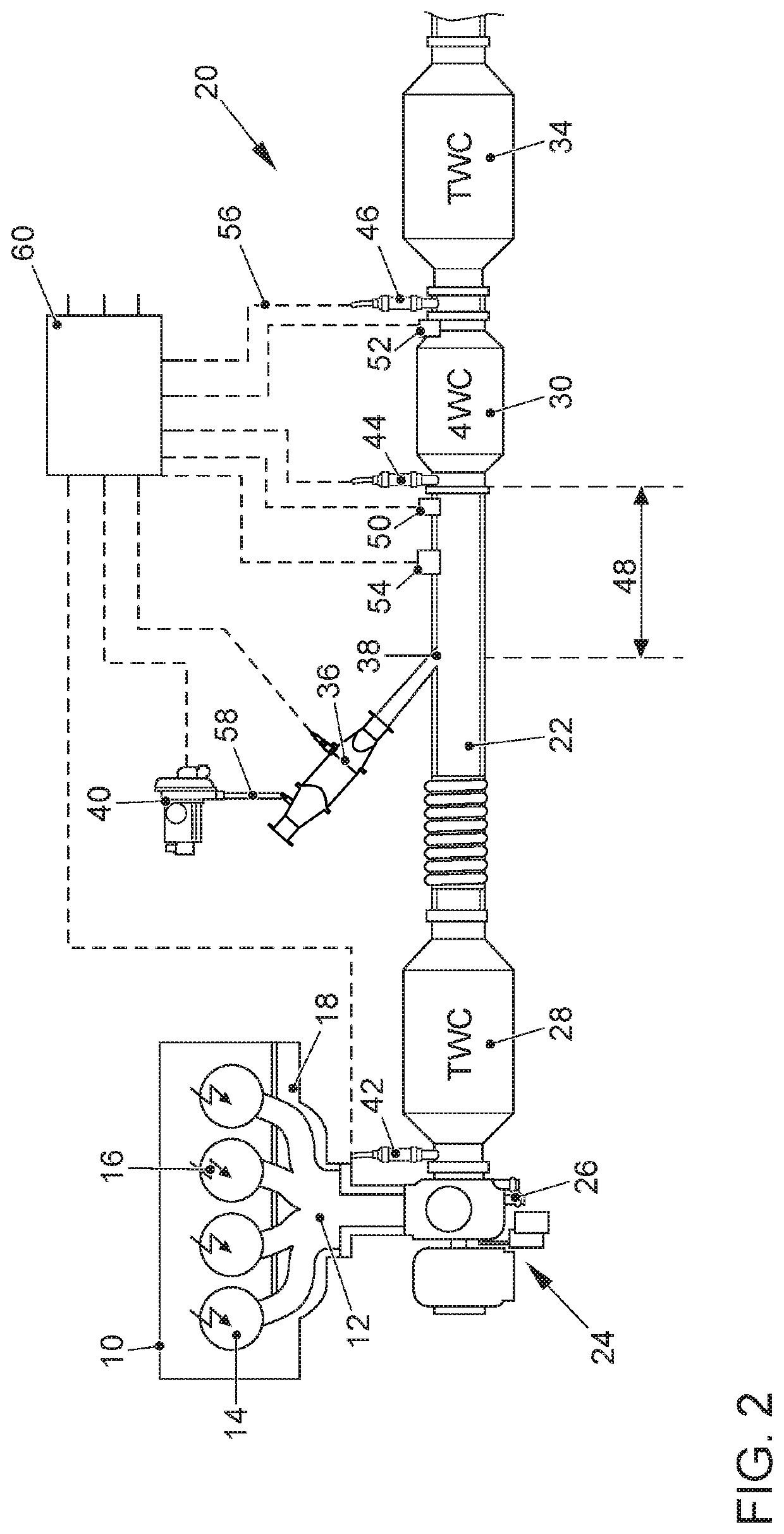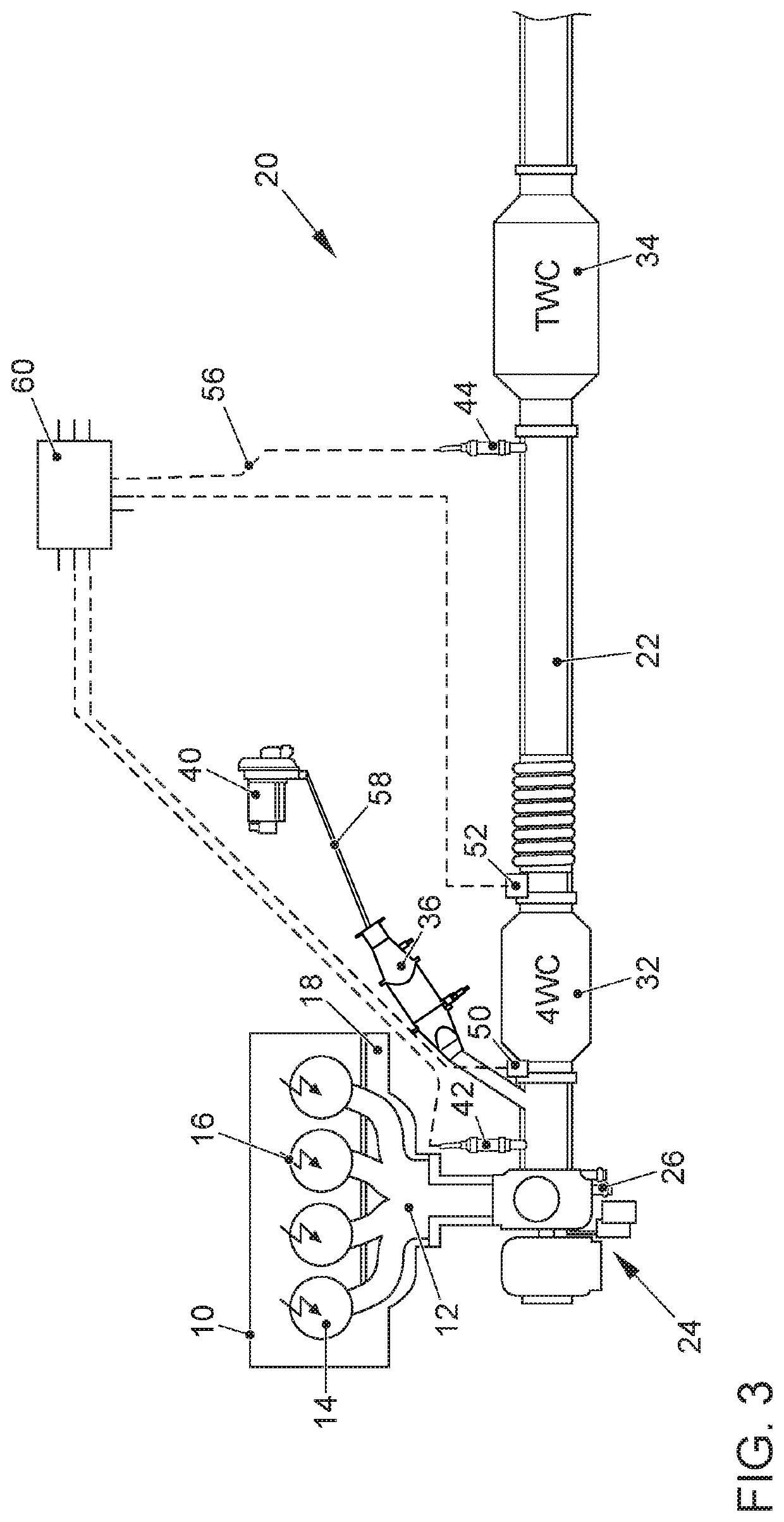Exhaust gas aftertreatment system and method for exhaust aftertreatment of an internal combustion engine
an exhaust gas aftertreatment and internal combustion engine technology, which is applied in the direction of machines/engines, mechanical equipment, electric control, etc., can solve the problems of increased fuel consumption power loss, and impaired running smoothness, so as to reduce the emissions of internal combustion engines, reduce secondary emissions, and avoid an increase in secondary emissions
- Summary
- Abstract
- Description
- Claims
- Application Information
AI Technical Summary
Benefits of technology
Problems solved by technology
Method used
Image
Examples
Embodiment Construction
[0035]FIG. 1 shows a schematic illustration of an internal combustion engine 10 whose outlet 12 is connected to an exhaust gas system 20. The internal combustion engine 10 is designed as a gasoline engine that is spark-ignited by means of spark plugs 16, and that has multiple combustion chambers 14. The internal combustion engine 10 is preferably designed as an internal combustion engine 10 that is charged by means of an exhaust gas turbocharger 24, with a turbine 26 of the exhaust gas turbocharger 24 situated downstream from the outlet 12 and upstream from the first emission-reducing exhaust aftertreatment component, in particular upstream from a three-way catalytic converter 28 close to the engine. The exhaust gas system 20 includes an exhaust duct 22 in which a three-way catalytic converter 28 close to the engine is situated in the flow direction of an exhaust gas through the exhaust duct 22, and a four-way catalytic converter 30 is situated downstream from the three-way catalyti...
PUM
 Login to View More
Login to View More Abstract
Description
Claims
Application Information
 Login to View More
Login to View More - R&D
- Intellectual Property
- Life Sciences
- Materials
- Tech Scout
- Unparalleled Data Quality
- Higher Quality Content
- 60% Fewer Hallucinations
Browse by: Latest US Patents, China's latest patents, Technical Efficacy Thesaurus, Application Domain, Technology Topic, Popular Technical Reports.
© 2025 PatSnap. All rights reserved.Legal|Privacy policy|Modern Slavery Act Transparency Statement|Sitemap|About US| Contact US: help@patsnap.com



